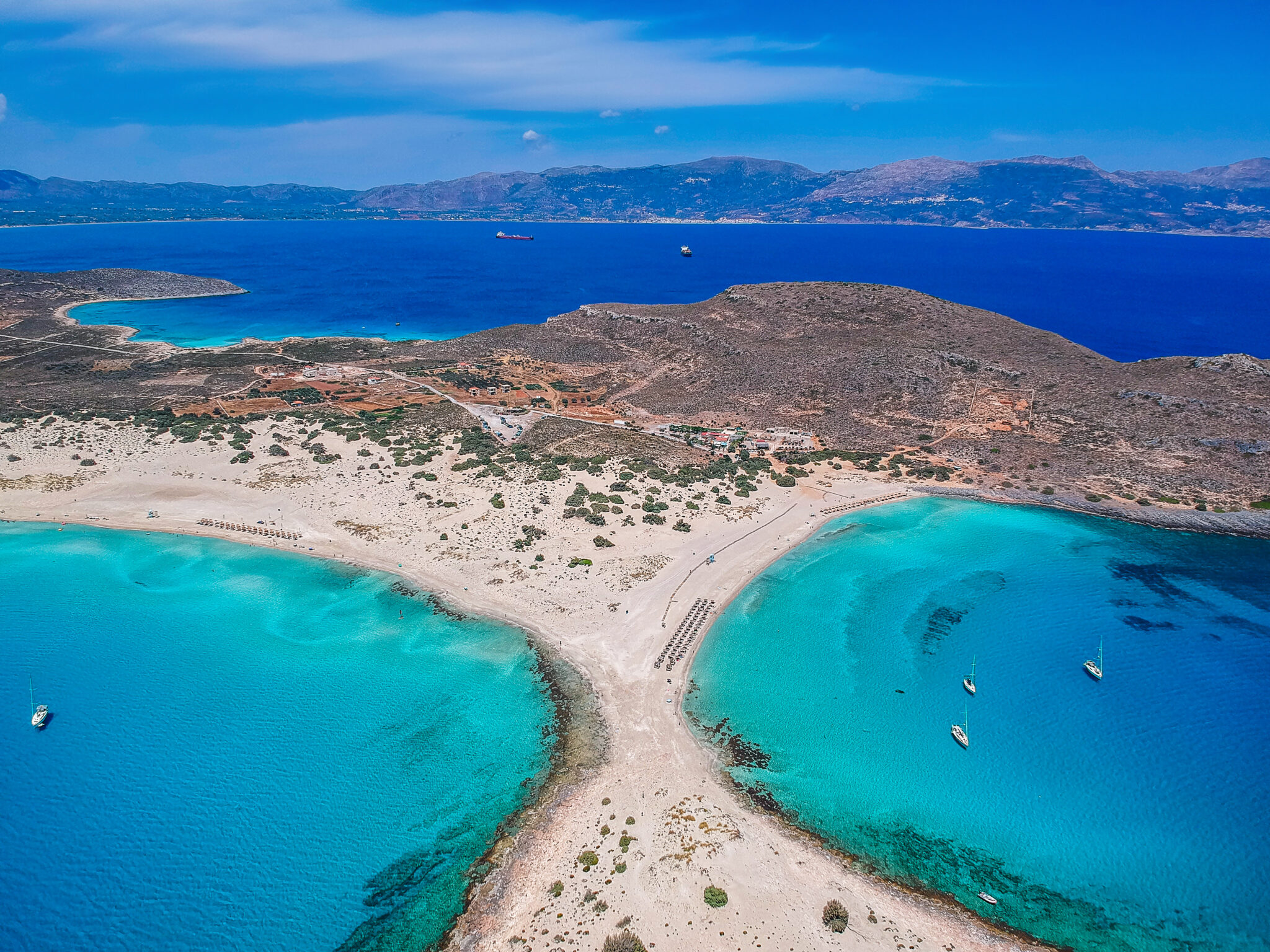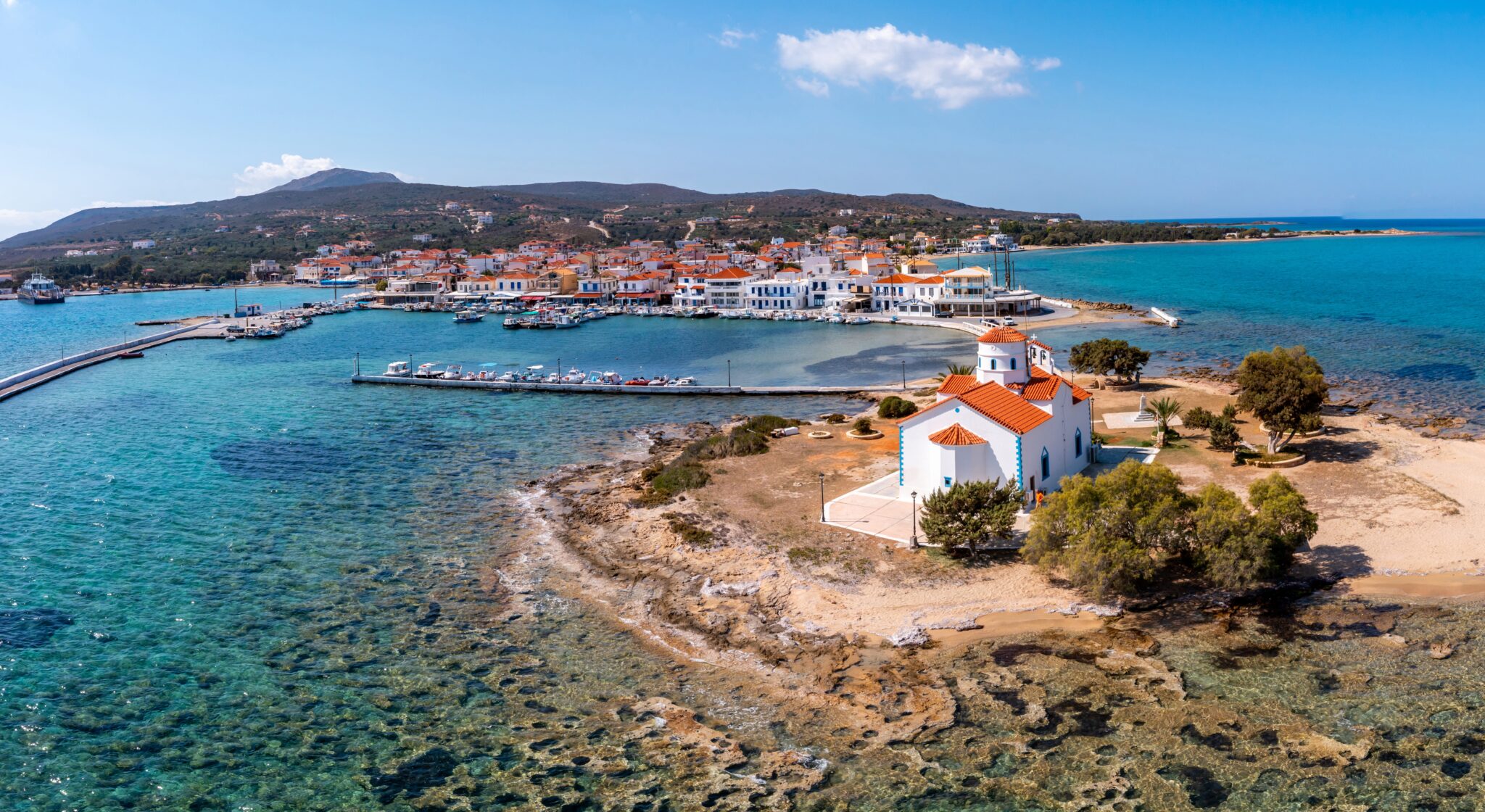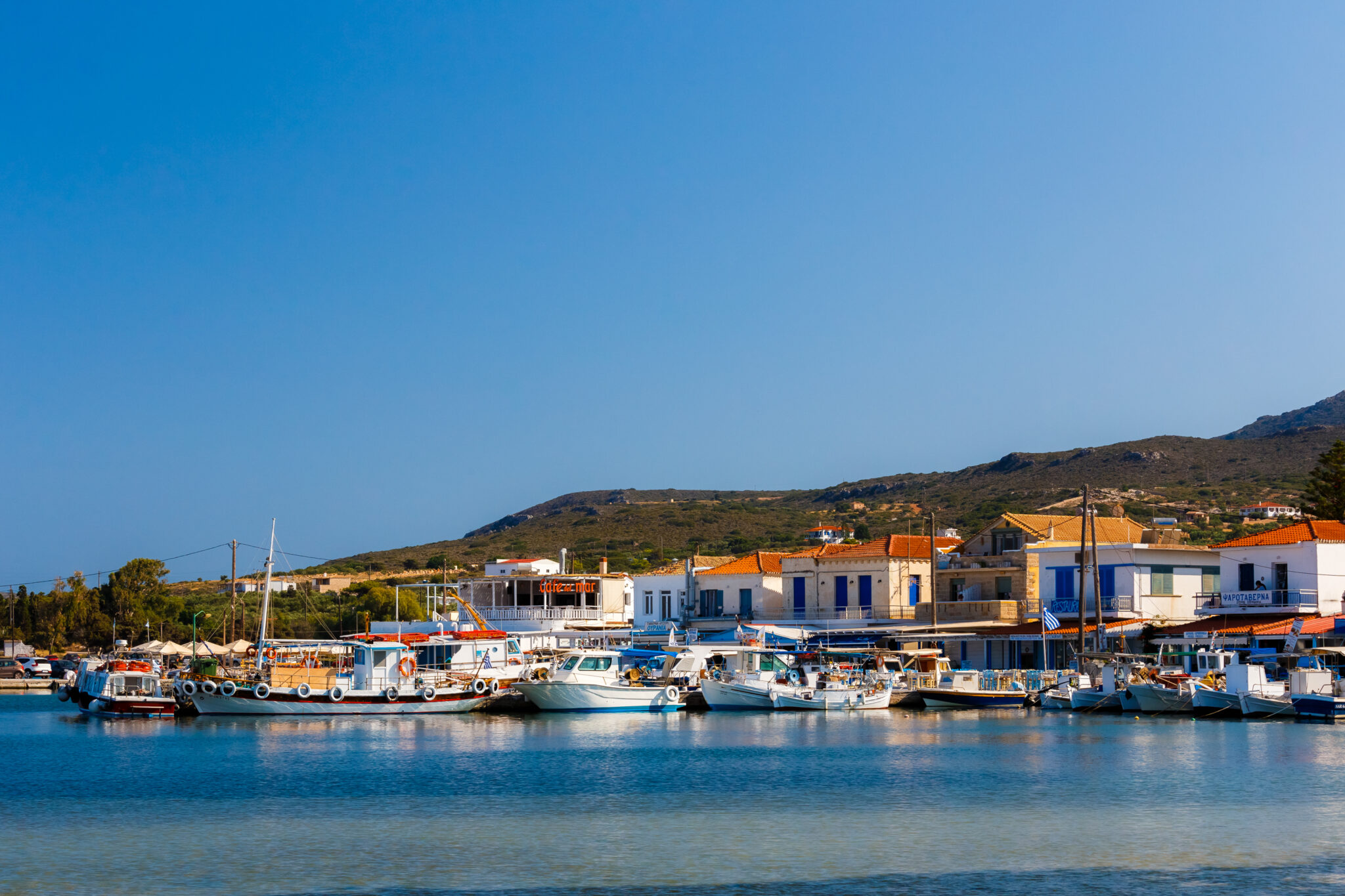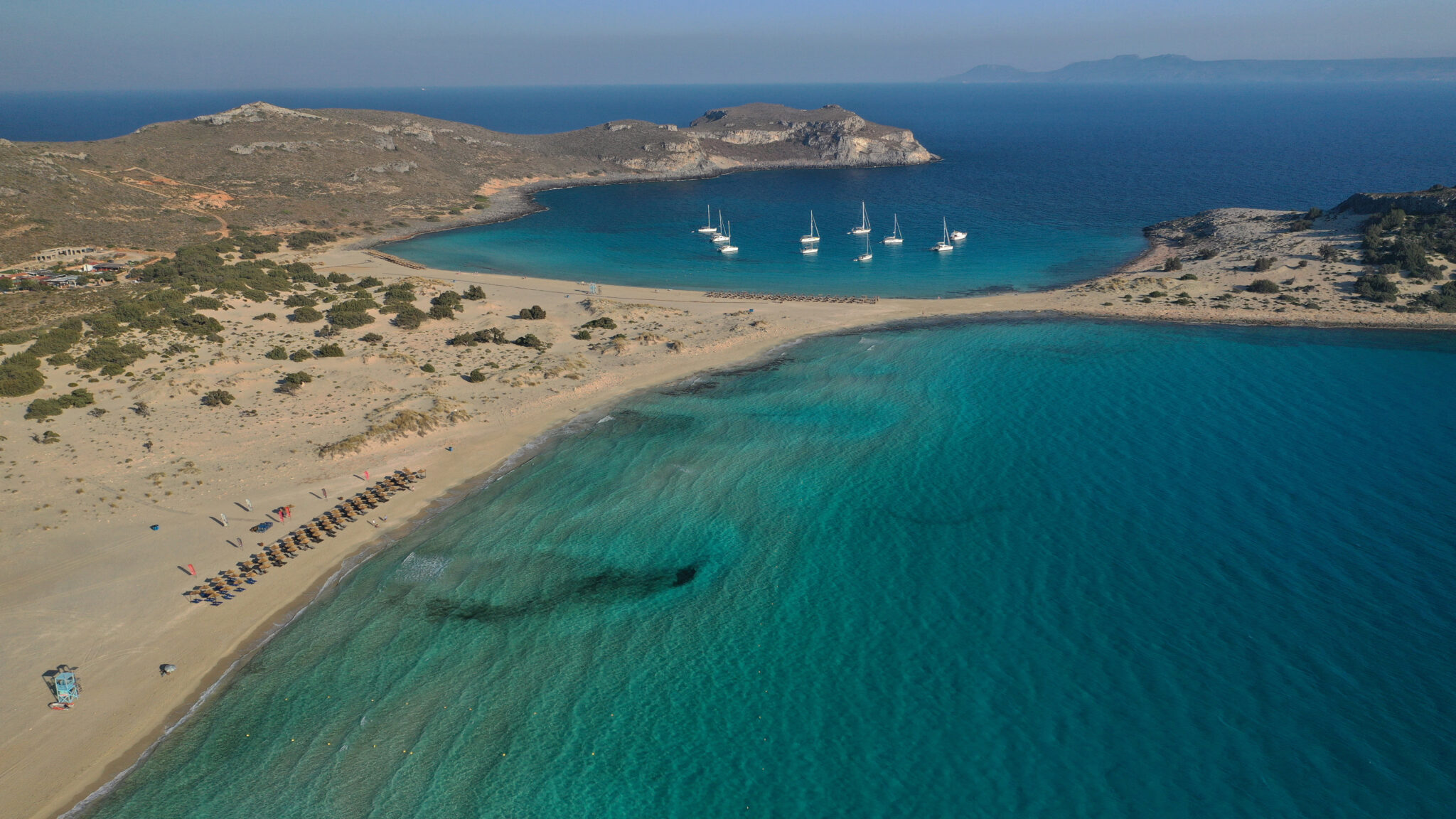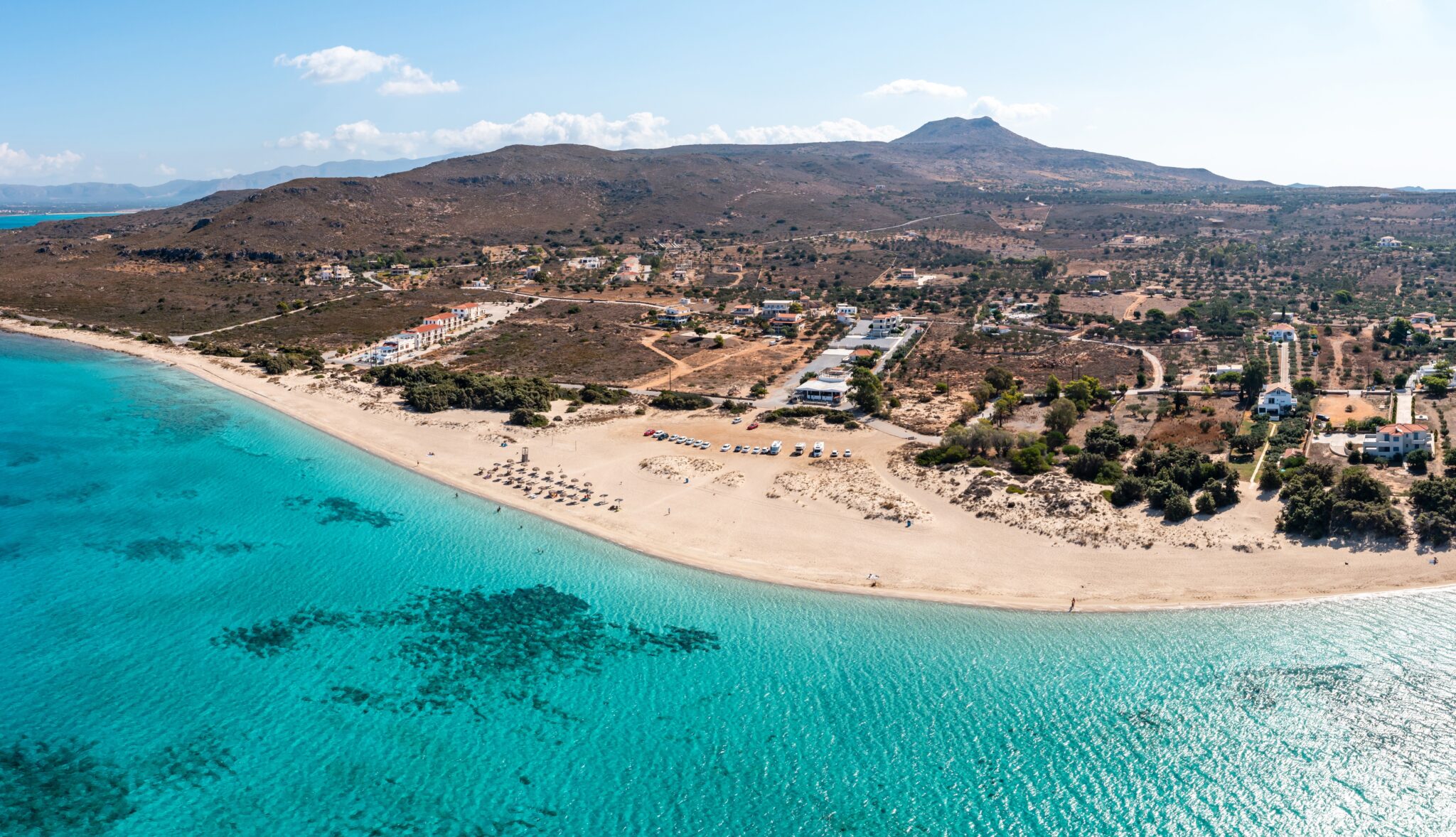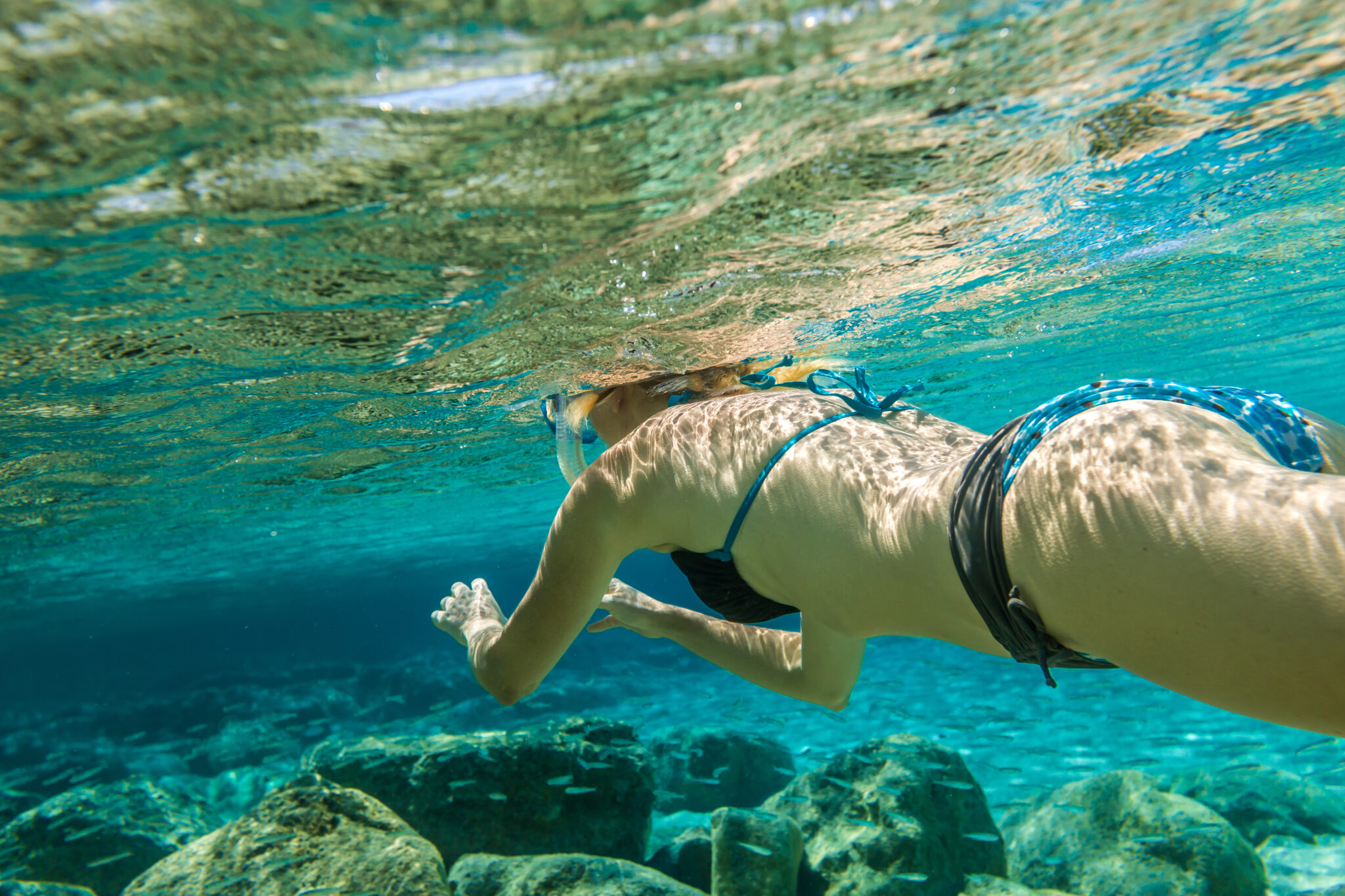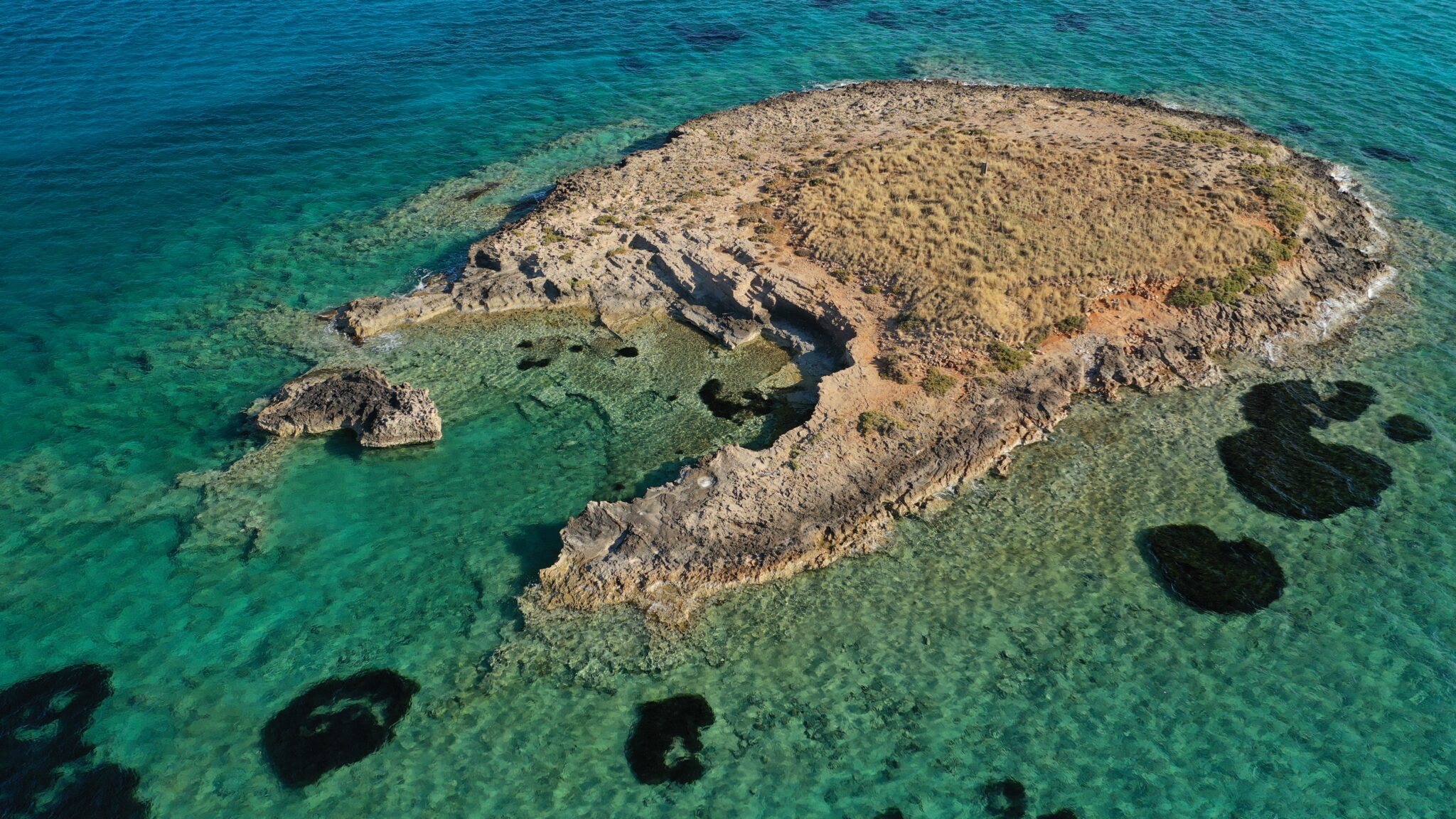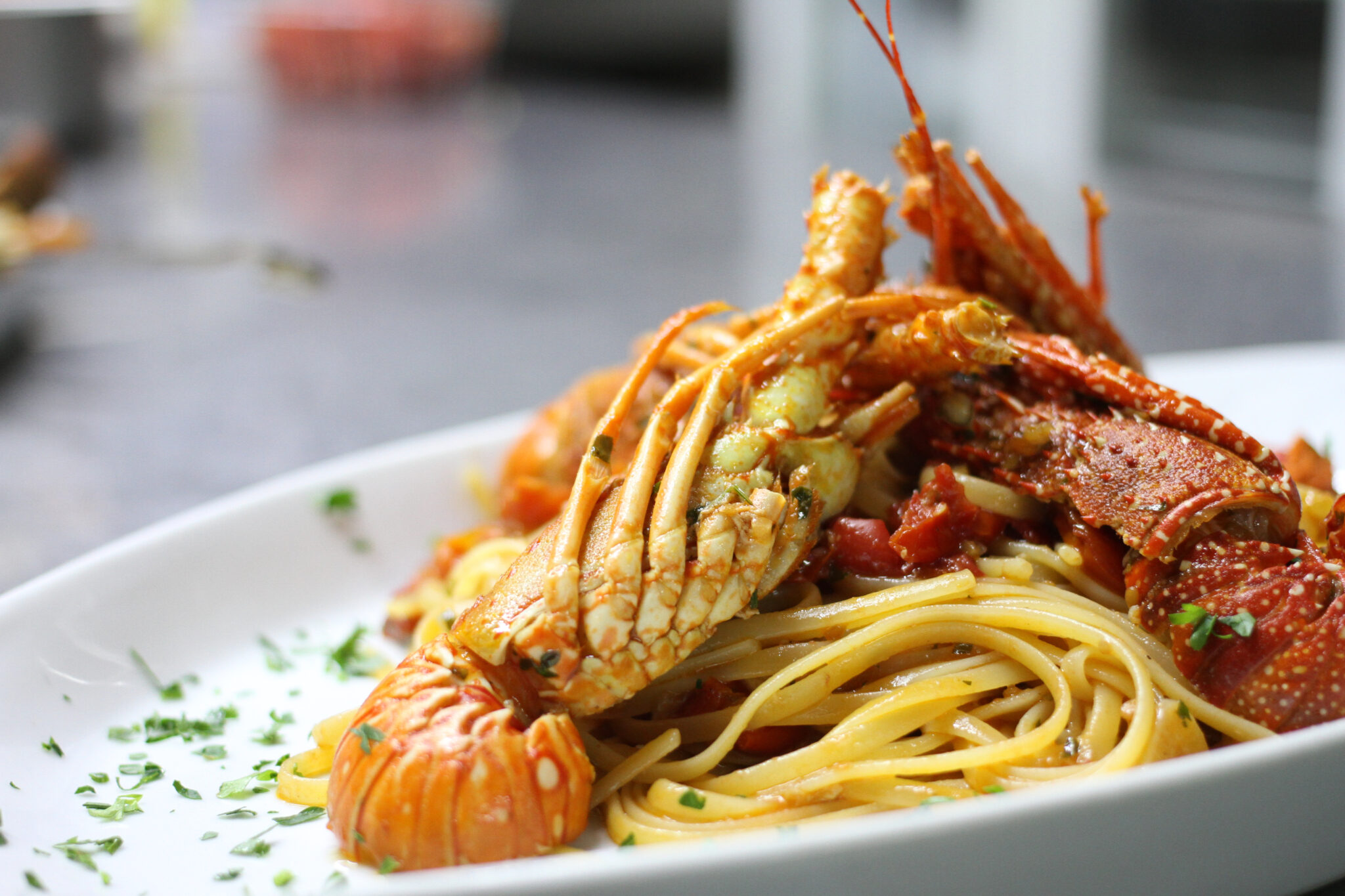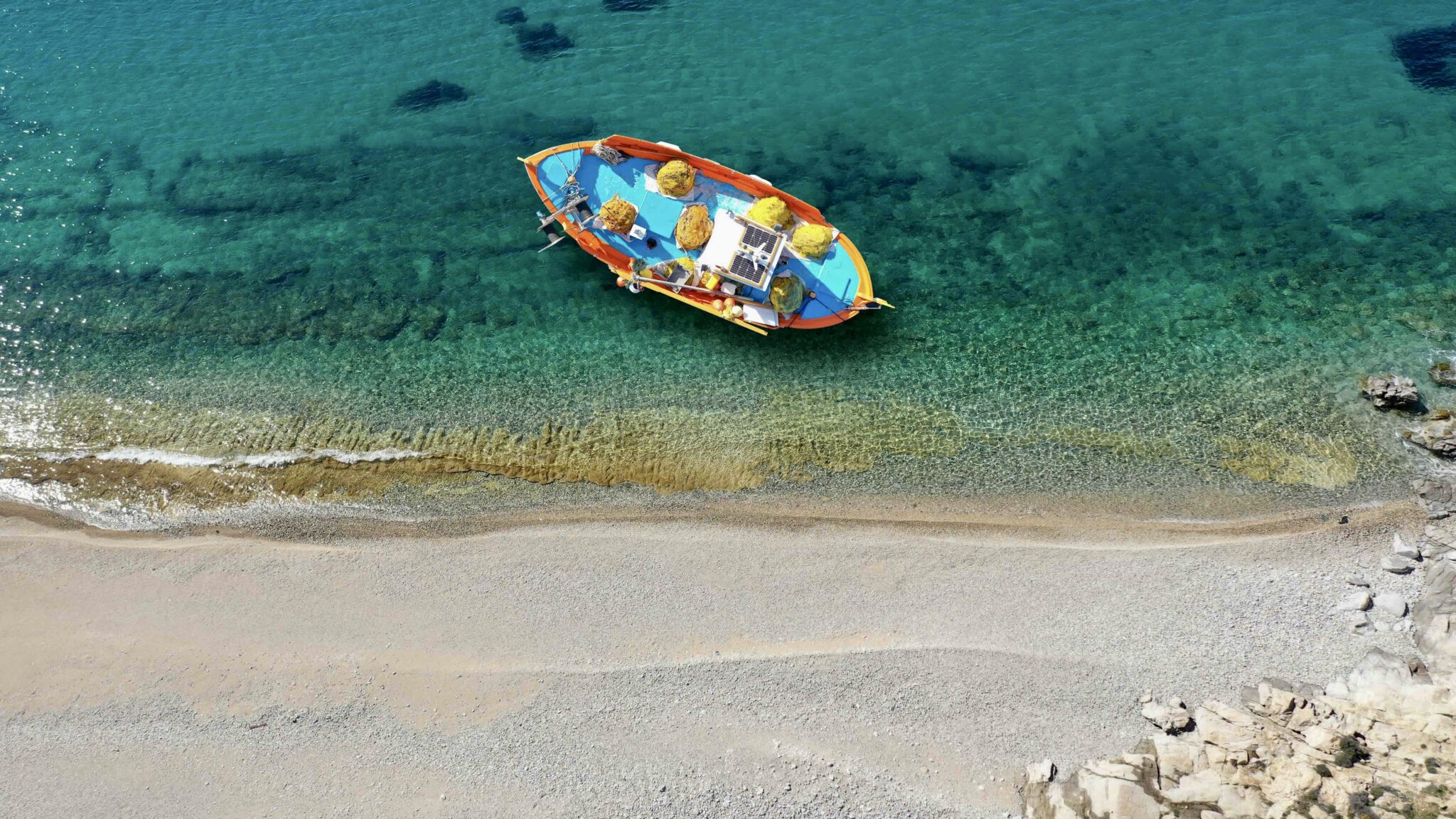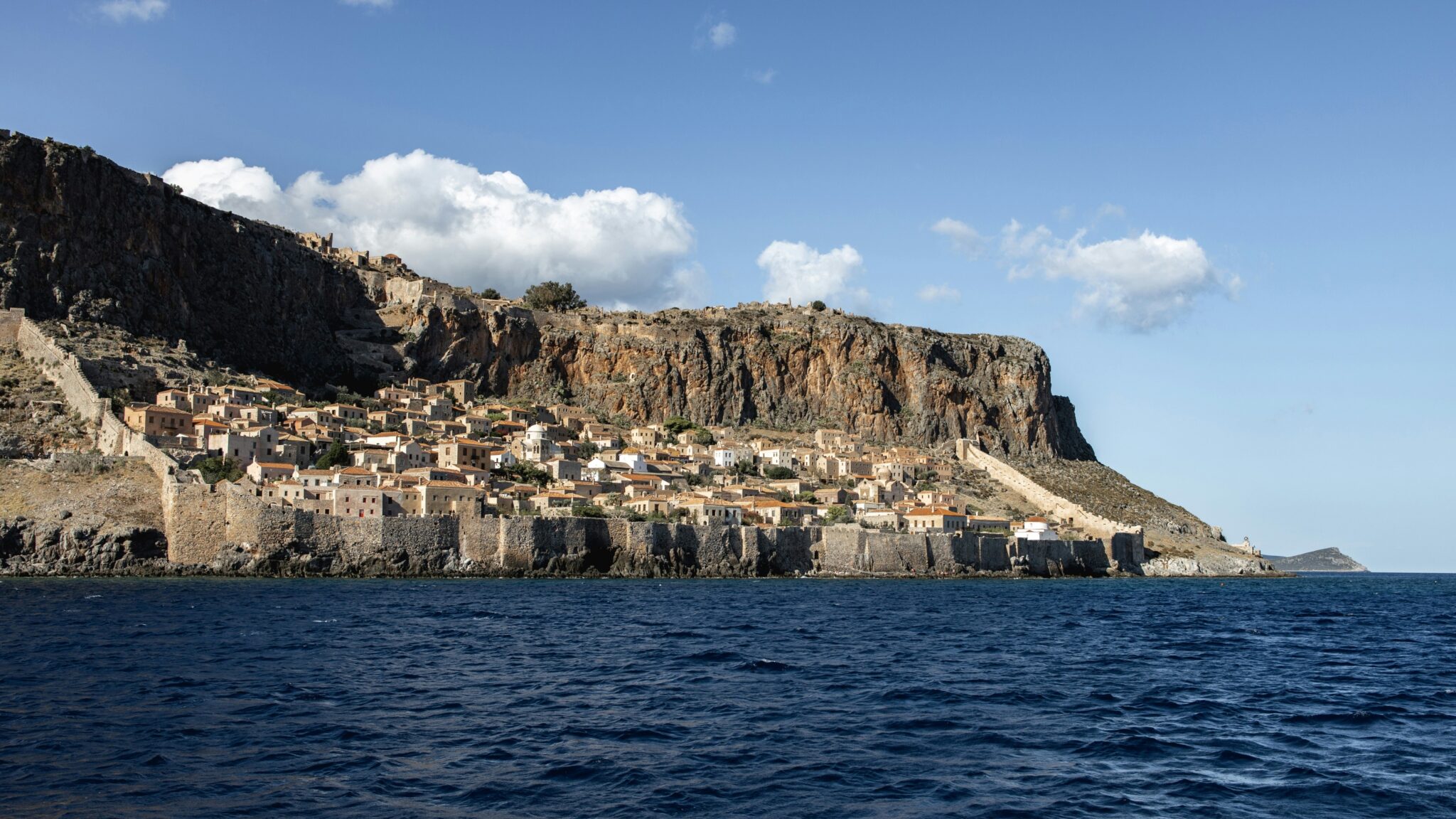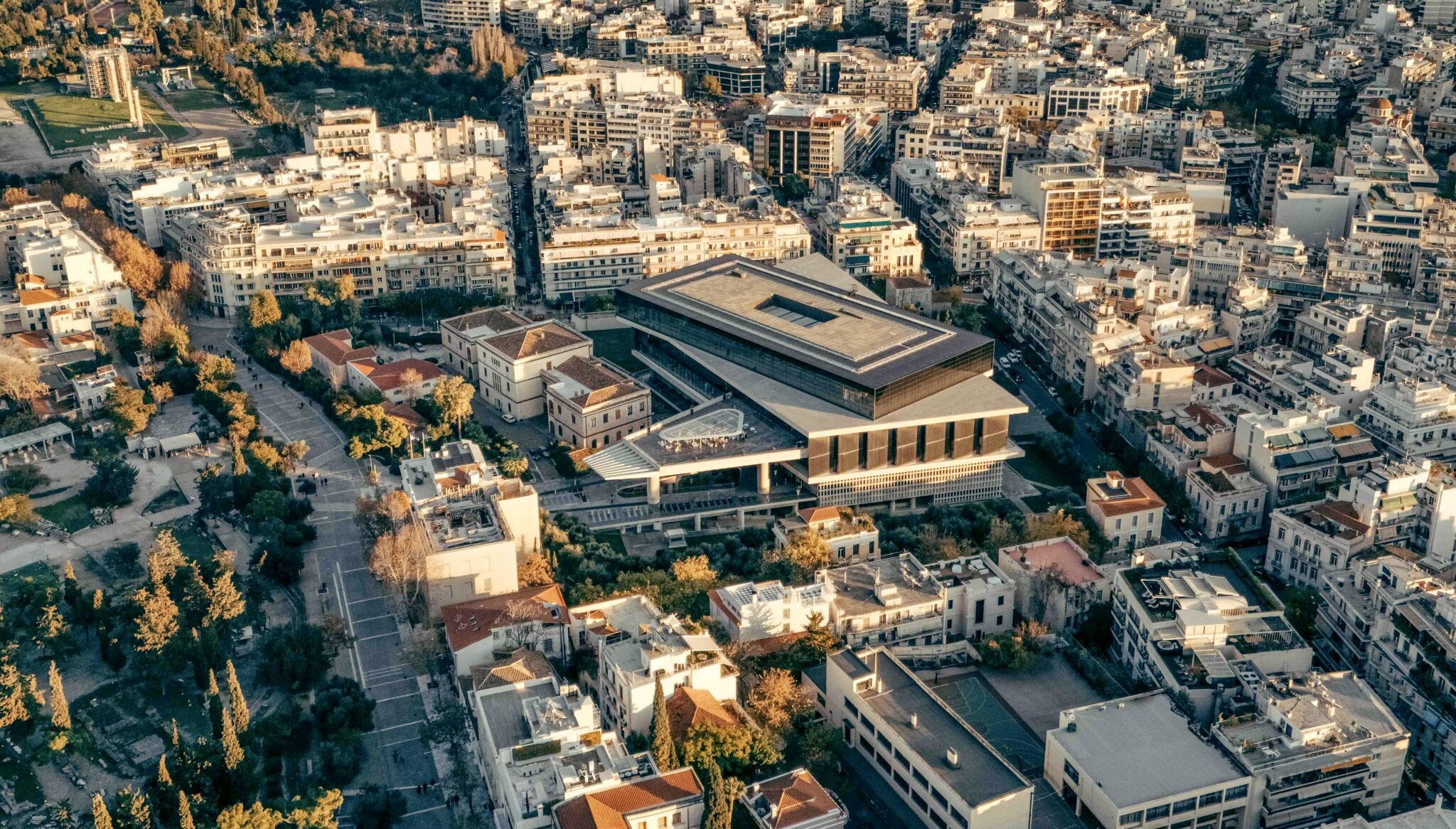Something we’ve all been rediscovering in the past two years is that, sometimes, to get to the summer heaven on earth of your dreams, you don’t need to get on a crowded boat.
We got in the car early in the morning. We were calm, following our own pace, with no port traffic stress, and no worries to make it in time to catch the boat. We started a four-wheeled cruise with the edge of Peloponnese’s first leg as our final destination, that is, Elafonisos. The road till Sparta is easy, so easy that it makes you wonder why everyone told you that the road to the only island of Laconia is long. And just as you’re starting to enjoy the drive, you take the turn towards Monemvasia and Neapoli.
After you pass by Sparta, you’ve already left the reality of the city behind. You can lower your speed, switch off the music, crack open the windows, and take in the authentic aura of Laconia, collect images, sounds, and smells. And with your senses heightened, you vertically cross the east leg of Laconia, until you get to Neapoli and then up to Pounta. The ferry to Elafonisos leaves every half hour and takes less than 9 minutes to get across. On the left of Pounta’s small pier, there’s a wonderful sand beach with amazing waters, that’s well worth a swim before you board the boat.
On board, we learn that Elafonisos has been inhabited since antiquity, when it wasn’t an island yet but a peninsula with the name Onou Gnathos (Donkey’s Jaw) since, according to Pausanias, its shape resembled the jaw of a donkey. Today’s name (Elafonisos means the deer island) is due to the small red deer that used to live here, according to Pausanias. As we approach, the small scenic chapel of Agios Spiridonas, the island’s patron saint, standing on a skerry since 1858 together with an abandoned windmill, welcomes us. At the tiny port and the island’s main village, the caiques slightly sway in the turquoise waters, bright white houses reflect the blinding summer light, and an abundance of ouzeris and fish taverns set their tables by the sea.
The entire island stretches just 18km, has 4 small villages and about 750 residents. Built on the northern edge of Elafonisos, the village of the same name, the capital – Hora of the island, includes traditional as well as modern houses with beautiful gardens, well-kept alleys and some tourist lodgings, while on the seaside street there are many cafés and taverns. The other three villages on the island – Kapari, near the port village, Lefki with the famous Simos beach, and Kato Nisi with the lovely Panagia beach – are even smaller. The atmosphere on the island is laidback and unaffected. Life here is carefree and relaxing. Especially once you see the island’s main attraction, none other than the beaches, your brain will let go of anything stressful, time will expand, and you will be submerged in beauty.
Legendary beaches with dreamy waters
The first time you’ll visit Elafonisos, you’ll probably do it to swim in the famous, exotic beach of Simos. The endless sand, the exotic sand dunes with the large-fruited junipers and the crystal-clear emerald blue waters of the two beautiful bays – Sarakiniko and Fragos – at the south part of the island, near the village Lefki, have made Elafonisos famous all over Europe. It’s worth exploring the area around the wonderful beach, to walk on the sand dunes, and take in the distinctive juniper scent that is enough to relax you and help you reset – exactly what you need on your holiday. And then, with your flip flops sinking in the hot sand, causing ivory ripples, to run towards the water for that first dip in the rightfully famous water.
There are many, equally wonderful beaches on the island, even though Simos steals the show. Very close to Simos, the small, calm beach of Lefki is often overlooked, but has an equally lovely sandy beach and emerald waters. On the west part of the island, the beach of Panagia near the village Kato Nisi, also has sand dunes, large-fruited junipers and amazing blue waters. It’s worth staying in Panagia beach until the sunset, to enjoy the incredible colours of the sky as the sun dips into the sea, and to try to see the green ray of the sunset that according to Jules Verne, magically gives clarity. A well-hidden and bumpy sand path starts at Avlaki, in Panagia, that leads to the island’s best kept secret, the pebbled Aglifti beach. Alternatively, you can visit the scenic bay with the shallow waters and the bright white chapel of Agios Patapios, by sea. Another beautiful sand beach, despite being so close to the port of Elafonisos is Kontogoni, that is popular mainly among the locals.. It’s the ideal place for when the south winds blow. Kontogoni has amazing waters, some tamarisk trees offering shade, some umbrellas and quite a few shops.
Discover the island’s hidden secrets
Despite its size, Elafonisos has six hiking trails and three bicycle trails, so, if you enjoy discovering and are a fan of adventure you can travel all over the island and explore its every corner, like for example the Simos cave, where, according to the myth, the whole island was born. It’s right above the Simos beach and the climb takes about 20min, but the view from above is amazing. All the trails on the island have been mapped and can be found on the Elafonisos topoGuide app.
With lovely diaphanous waters and a rich seabed, Elafonisos is ideal for snorkelling and diving. The seabed around the island is very interesting, even at more shallow parts. In addition, the island is a great place for many challenging water sports like surfing and wind and kite surfing. And of course, you can also rent a boat or go on a tour of the island with a local guide and see places that are not accessible by land, swim in marvellous waters, and admire unique geological phenomena, like Karandreas cave, a cave in the sea.
The most important sight of Elafonisos is none other than the sunken ancient city in Pavlopetri. It’s located underwater between the beautiful beach of Pounta and the skerry Pavlopetri, northeast of Elafonisos. It’s a one-of-a-kind city since its design remains intact to this day. It is one of the oldest sunken cities in the world, and includes intact floor plans of building complexes, streets, gardens etc.; while the most impressive part is that all of these ruins are located less than three metres deep, making Pavlopetri very easily accessible to anyone. A mask and a pair of flippers is enough to give you a taste of the magic of the ancient sunken city that is said to have inspired the legend of the Lost City of Atlantis.
Seafood
Being an authentic fish island, the culinary identity of Elafonisos revolves around seafood. So, fresh fish and seafood are staples of the traditional Elafonisos table. In addition, more than 500,000 m² of olive groves on the island produce abundant, light, olive oil, as well as olives that are prepared in various ways. Many of the inhabitants of Elafonisos have farmland across the island, in Laconia, where they grow wheat, oats, barley and pulses. Elafonisos is covered in plants like thyme and rosemary that are great for honeybees, and as a result they make great quality honey on the island.
Kakavia (thick traditional fish soup) is the island’s specialty. Also try the octopus in tomato sauce with potatoes or macaroni pasta – they also prepare grilled or vinegar marinated octopus – and the delicious lobster pasta. Pies are very popular in Elafonisos and there are many versions of the classic pies here. Try tsaiti, a traditional pie from Vatika in Laconia that shepherds used to make with fresh goats cheese and mint. They also make great rusks here, as well as traditional syrup desserts prepared in a pan, like samousades and lihnarakia.
Next to the scenic caiques that overlook the chapel of Agios Spiridonas, the fish tavern ‘Antonis’ serves amazing dishes with fresh fish and great seafood, based on traditional recipes, cooked with care using local extra virgin olive oil. (tel.: 0030 27340 61006).
At an amazing location, just above the Panagia beach, ‘Ta Nisia tis Panagias’ serve great fish and seafood, as well as wonderful casserole dishes like delicious rooster in red wine sauce, their specialty. Their lovely balcony is ideal to enjoy the sunset. (tel.:0030 6974 316434).
‘Dagiadas’ also serves fresh fish and seafood right next to the sea, as well as some amazing meat dishes with meat from Laconia. Also, here you can try tsaiti (tel.: 0030 27340 61384). In a lovely cobbled garden, hidden away in an alley off the main seaside promenade, the tavern ‘Sta Kala Kathoumena’ serves very tasty homemade food and fresh fish and seafood straight from the sea. (tel.: 0030 6974 686730).
Read also:
Agiofarago: Fine pebbles and amazing waters, at the mouth of the Gorge of Saints



